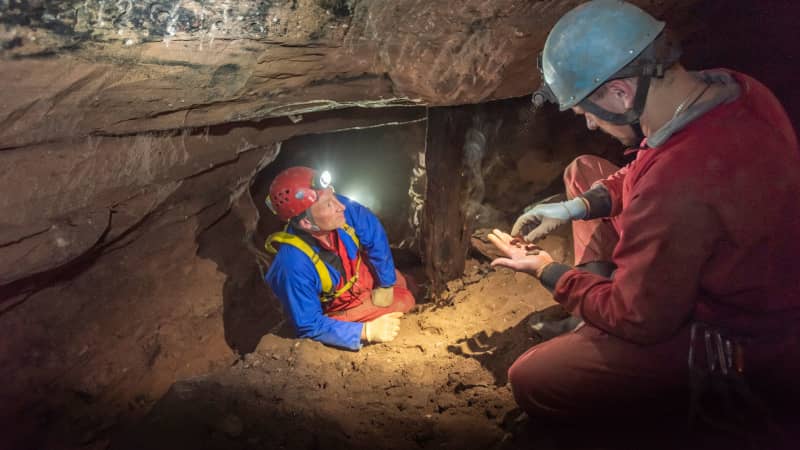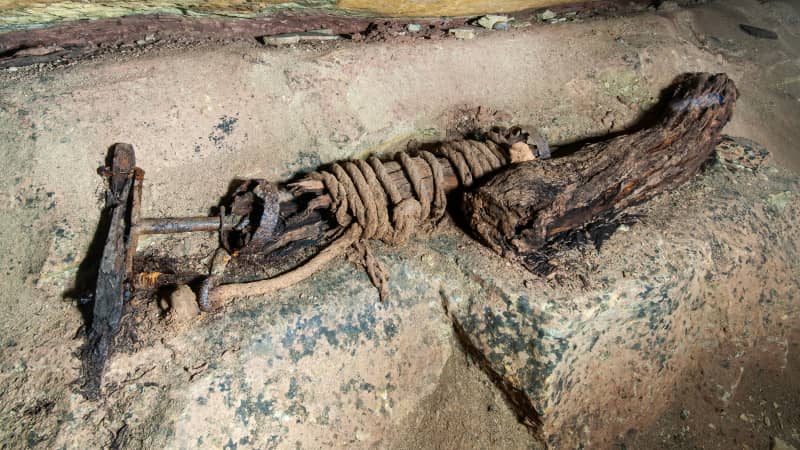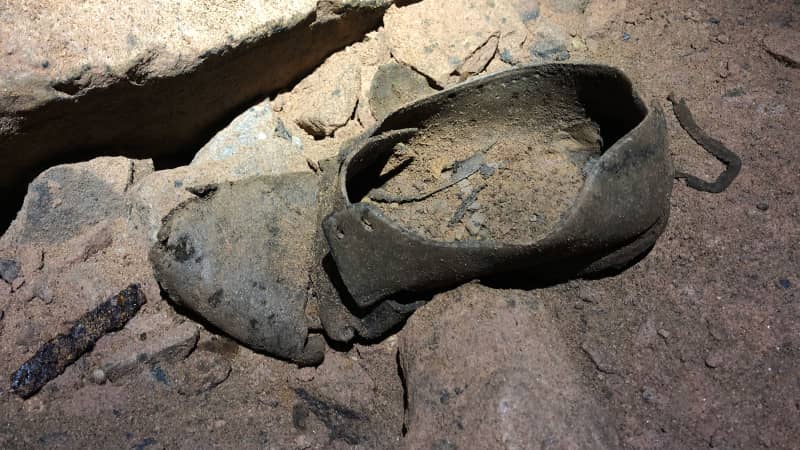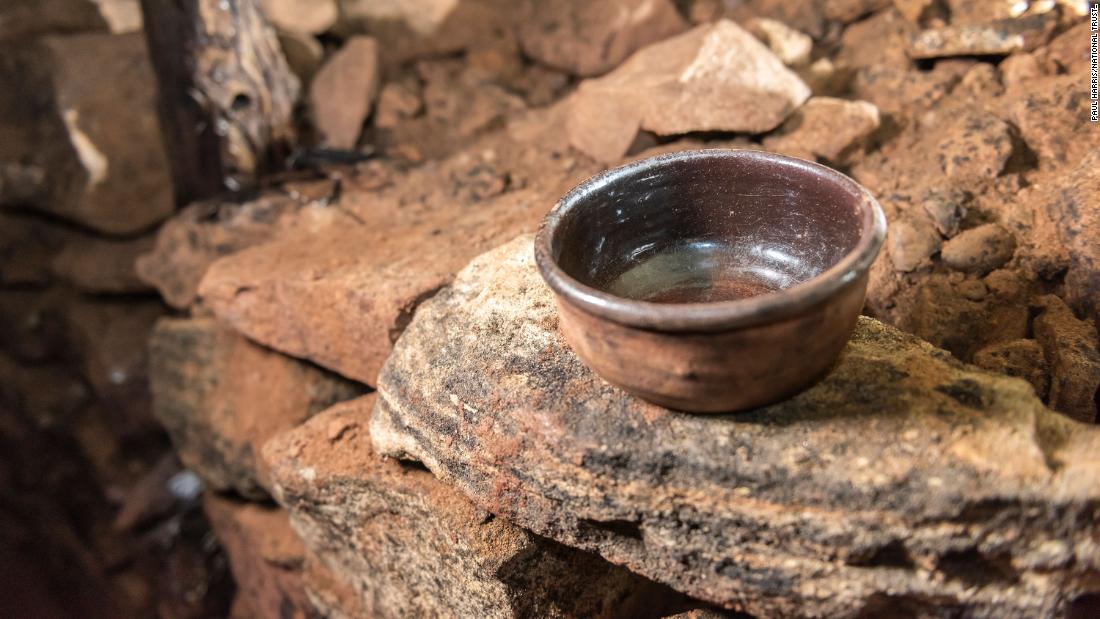The mine, which would have been in production during the Napoleonic Wars, was found in Alderley Edge village. It is believed to have been abandoned in 1810, according to a press release from UK conservation charity the National Trust on Tuesday.
Leather shoes, clay pipes, a metal button from a jacket and mine machinery were among the items found.
Inscriptions written in candle soot were also uncovered, as well as a clay bowl which superstitious miners may have buried in the wall to show their gratitude for a good quality of mineral.

National Trust archaeologist Jamie Lund (left) and Derbyshire Caving Club member Ed Coghlan (right) explore the disused cobalt mine in the English village of Alderley Edge.
Paul Harris/National Trust
Other discoveries include physical imprints from mine workers, such as fingerprints in clay used to carry candles and the indentation of corduroy from a worker’s clothing where they rested against the wall.
Members of the Derbyshire Caving Club made the discovery last fall, the press release said, with specialists researching it ever since.

A windlass covered with a tightly-wound rope was one the items researchers found in the mine.
Ed Coghlan/Derbyshire Caving Club
Ed Coghlan, a member of the Derbyshire Caving Club, said the organization has explored many disused historic mines and made some “significant” discoveries, but this latest find is particularly special.
“To find a mine in pristine condition, together with such personal objects and inscriptions, is rare,” Coghlan said in the release.
“It is a compelling window into the past and to the last day when the mine workers stopped their activities.”

This leather shoe belonging to a former quarry worker was unearthed in the mine.
Ed Coghlan/Derbyshire Caving Club
Coghlan added that one of the items left behind was a windlass lifting device, which would normally have been taken away for reuse in other mines. Researchers say its abandonment suggests workers were ordered to collect their tools and leave “without much warning.”
The National Trust owns the land, which has been leased to the caving club since the 1970s.

Researchers photographed and catalogued items such as this small blue button belonging to a former quarry worker.
Ed Coghlan/Derbyshire Caving Club
Cobalt was used in 19th century England for producing a blue color in glass and pottery. Mining for it in England was short-lived. It was bolstered during the Napoleonic Wars from 1803 to 1815 when foreign imports stalled. However, trading soon resumed after the conflicts ended, meaning some mines — such as the one at Alderley Edge — were closed, the press release said.
